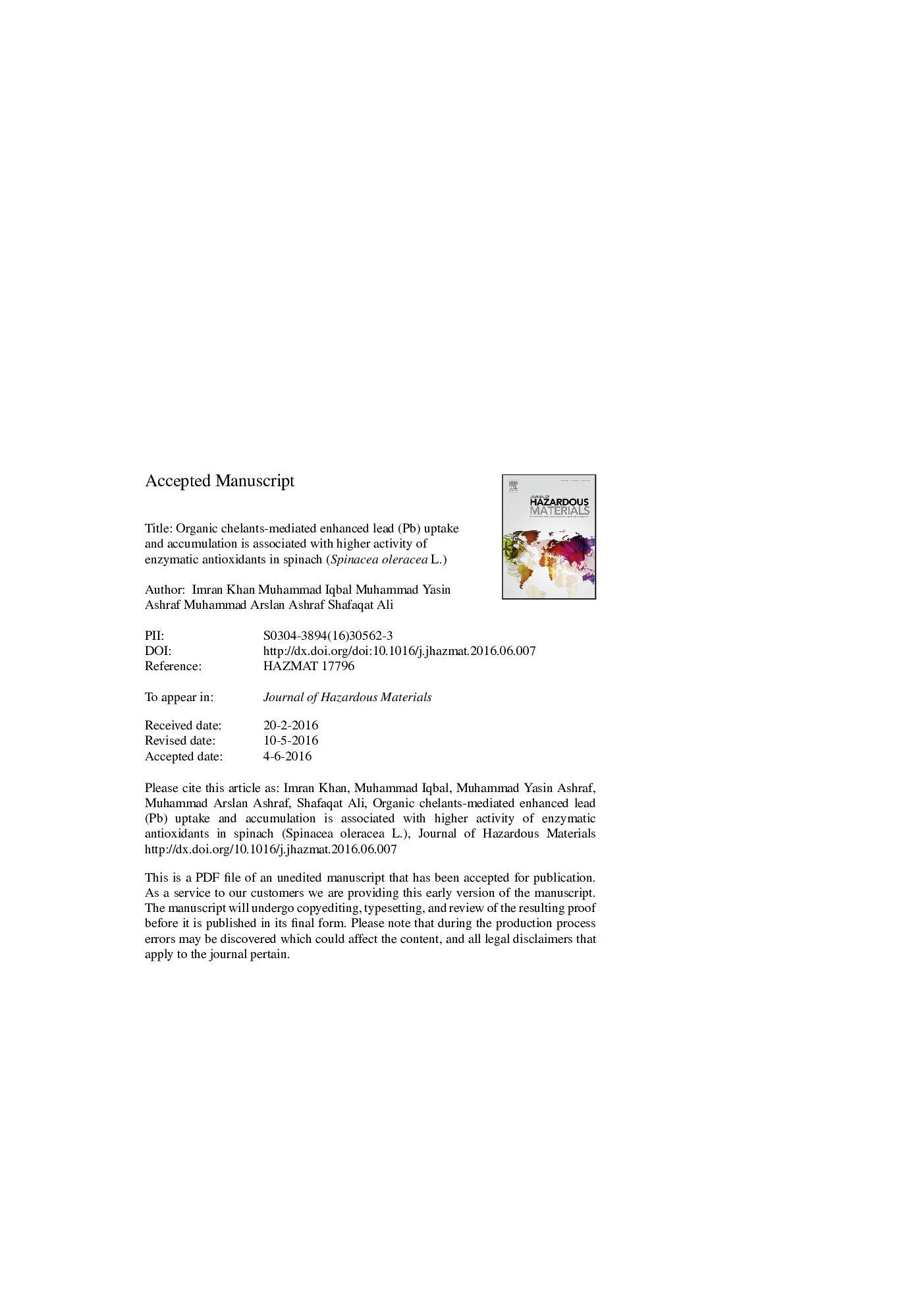| Article ID | Journal | Published Year | Pages | File Type |
|---|---|---|---|---|
| 6970191 | Journal of Hazardous Materials | 2016 | 32 Pages |
Abstract
The spinach was tested in the present studies for its phytoextraction potential. Furthermore, the study assessed whether organic chelants could reduce oxidative stress, and thus enhance growth of spinach plants under 2.42 and 4.83 mM Pb regimes. Different organic chelates viz. ethylenediamine tetra acetic acid, (EDTA), citric acid (CA), oxalic acid (OA), tartaric acid (TA) and malic acid (MA) were applied separately in addition to control (without chelating agents) under different Pb regimes. The low (2.42 mM) Pb regime increased biological yield (kg haâ1). All the chelates except OA increased biological yield under low Pb regime. In contrast, TA caused less decrease in biomass under high (4.83 mM) Pb regime. The chelate-assisted rise in the antioxidant activities substantially contributed to reactive oxygen species (ROS) neutralization. Of the chelates, TA was the most effective in improving Pb uptake and its root to shoot translocation. Overall, the chelate-assisted buildup of Pb in the spinach did not exhibit inhibitory effects on the plant growth possibly due to their potential to decrease Pb-induced oxidative damage. The results elaborated the potential of TA in increasing root to shoot translocation of Pb, biomass, and thus suggested its use for phytoextraction of Pb using spinach in Pb contaminated environments.
Related Topics
Physical Sciences and Engineering
Chemical Engineering
Chemical Health and Safety
Authors
Imran Khan, Muhammad Iqbal, Muhammad Yasin Ashraf, Muhammad Arslan Ashraf, Shafaqat Ali,
